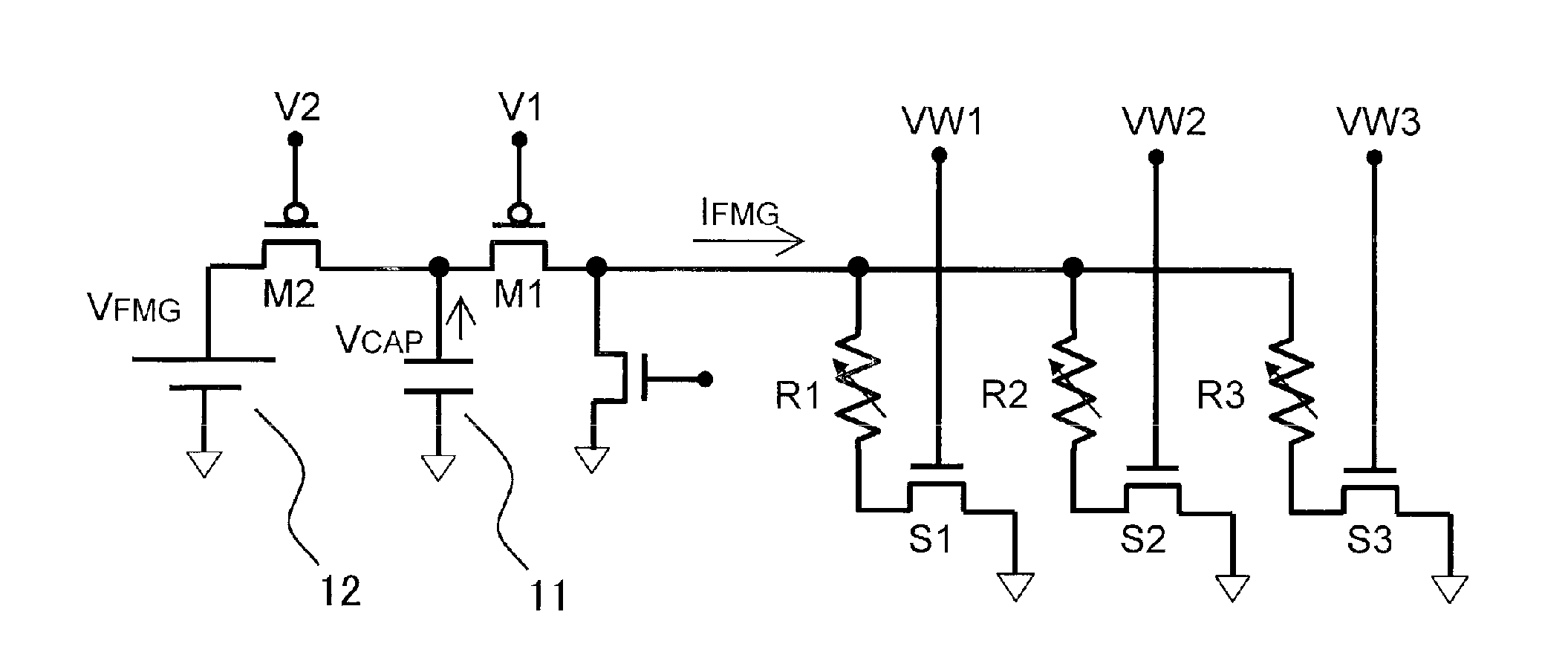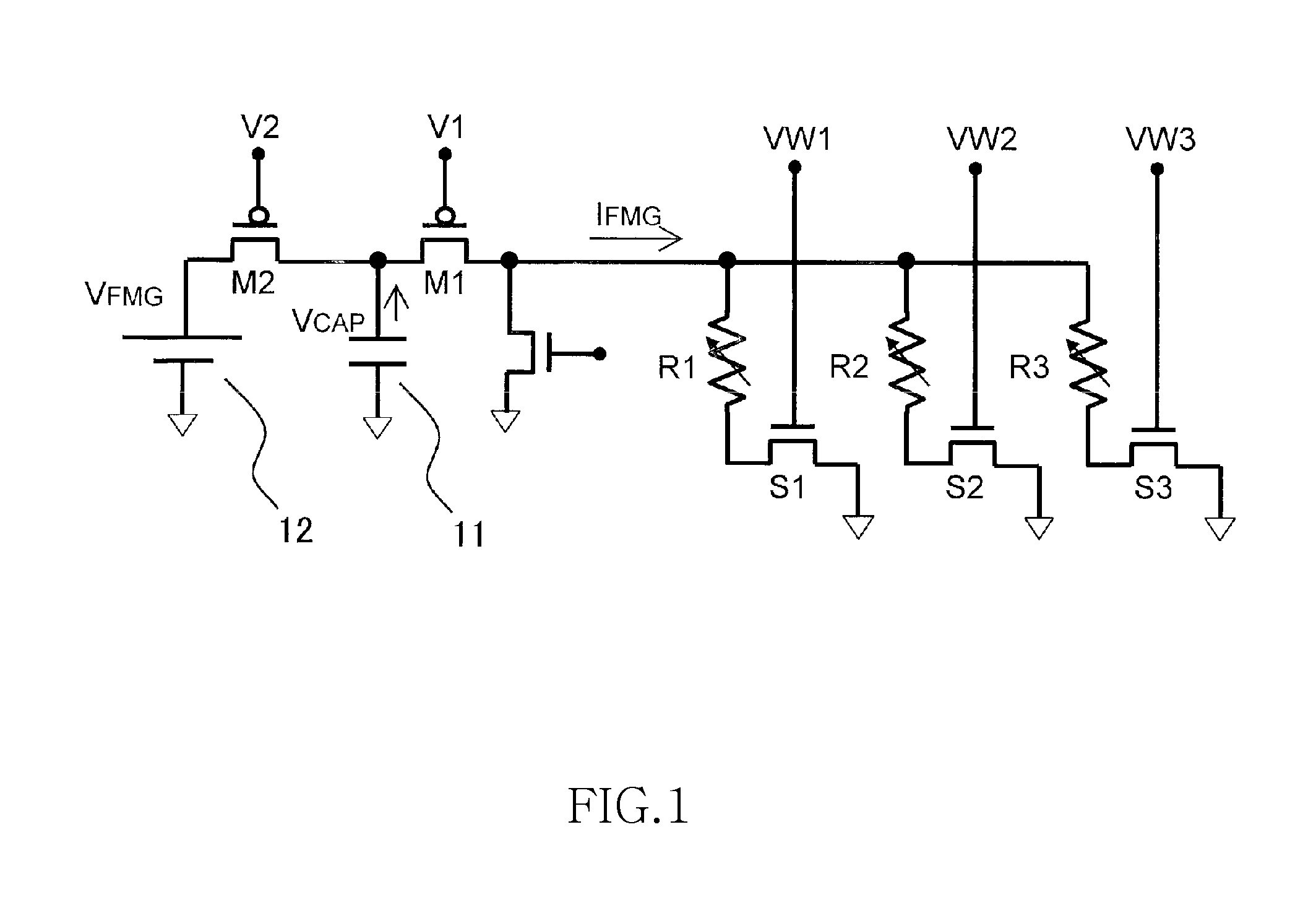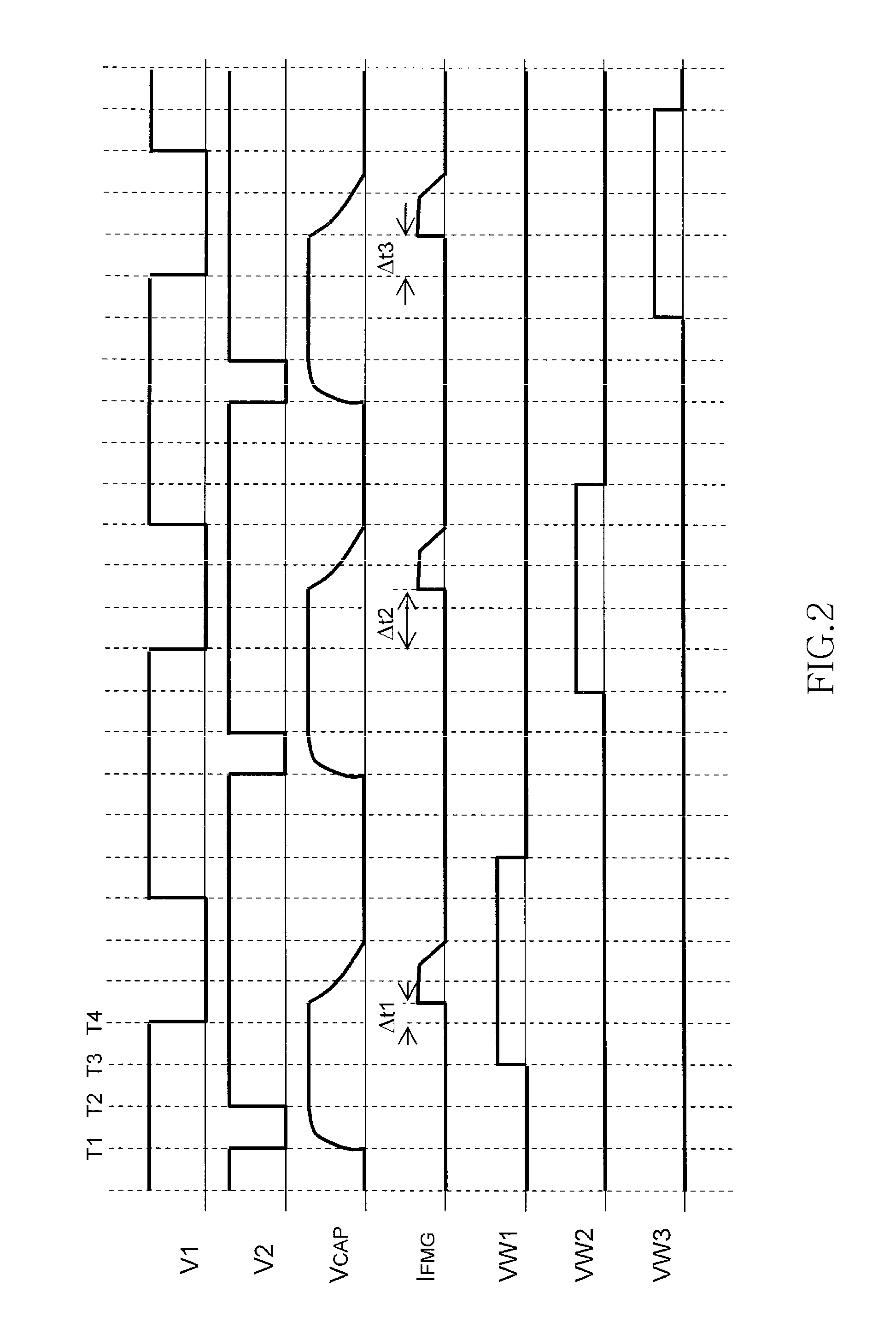Nonvolatile semiconductor memory device of variable resistive type
a semiconductor memory and resistive type technology, applied in the direction of information storage, static storage, digital storage, etc., can solve the problems of difficult to control the period, current starts to flow, and is difficult to ensur
- Summary
- Abstract
- Description
- Claims
- Application Information
AI Technical Summary
Benefits of technology
Problems solved by technology
Method used
Image
Examples
first embodiment
[0028]FIG. 1 shows an exemplary circuit diagram of a nonvolatile semiconductor memory device according to a first embodiment of the present invention.
[0029]In the nonvolatile semiconductor memory device according to the first embodiment of the present invention shown in FIG. 1, a plurality of variable resistive elements R1 to R3 each are connected in series to corresponding select transistors S1 to S3, thereby forming a memory cell. Voltages VW1 to VW3 are applied to the gates of the select transistors to select memory cells. The voltages and currents necessary for forming of the variable resistive elements R1 to R3 are supplied from a capacitor 11. One end of the capacitor 11 is connected to the memory cells via a PMOS switch M1, as well as to a power source 12 via a PMOS switch M2. The other end of the capacitor 11 is connected to a reference potential (e.g. GND). In the example shown in FIG. 1, PMOS transistors are used as switches M1 and M2. However, NMOS transistors may be used...
second embodiment
[0064]What is described in the above first embodiment is an example in which, during the forming process, the capacitor circuit 30 is used, and the forming voltage and current are supplied via the charged capacitor. Meanwhile, the transition (set operation) of the variable resistive elements from a high-resistance state to a low-resistance state is considered to be the same physical phenomenon as the forming. At the time of the lowering-resistance operation, the capacitor circuit 30 can be used.
[0065]In this case, if the amount of electric charge required for the forming process is different from the amount of electric charge required for the set operation, a plurality of capacitors can be used, and it is possible to switch between capacitors used for the forming process and capacitors used for the set operation. Alternatively, it is also preferred that all the plurality of capacitors be used during the forming process, and that some of the capacitors be used during the set operatio...
PUM
 Login to View More
Login to View More Abstract
Description
Claims
Application Information
 Login to View More
Login to View More - R&D
- Intellectual Property
- Life Sciences
- Materials
- Tech Scout
- Unparalleled Data Quality
- Higher Quality Content
- 60% Fewer Hallucinations
Browse by: Latest US Patents, China's latest patents, Technical Efficacy Thesaurus, Application Domain, Technology Topic, Popular Technical Reports.
© 2025 PatSnap. All rights reserved.Legal|Privacy policy|Modern Slavery Act Transparency Statement|Sitemap|About US| Contact US: help@patsnap.com



